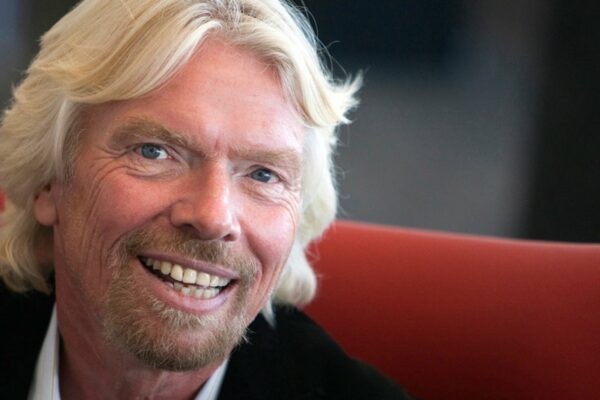 Hi Thomas, Welcome to Entrepreneurship Interviews. Tell us a bit about yourself.
Hi Thomas, Welcome to Entrepreneurship Interviews. Tell us a bit about yourself.
Tom: I am a senior partner and president of Kuczmarski & Associates, the foremost management consulting firm specializing in accelerating growth through innovation. I have authored five books and many articles on innovation. I have also been teaching innovation courses at Northwestern University’s Kellogg Graduate School of Management for 29 years. Along with Dan Miller, I am the co-founder of the Chicago Innovation Awards, an independent organization that recognizes the most innovative new products, services, business models, and processes developed in the Chicago area each year.
What are the Chicago Innovation Awards?
Tom: Established in 2002, the Chicago Innovation Awards shine a bright light on the creative spirit of Chicago by focusing attention on the most significant new products, services, business models, and processes developed in the region. The ten winners each year are innovations that uniquely fill unmet needs, spark a competitive response in the marketplace, exceed market expectations, achieve financial success, and improve people’s lives. They emerge from the public, private, and nonprofit sectors. Most importantly, the Chicago Innovation Awards remind us that innovation is thriving in America’s heartland.
Any big names that participated in the past?
Tom: Some of our more notable past winners have been Groupon, Feedburner (who was later bought by Google), 37 Signals, Vibes Media, Loggerhead Tools, Abbott, Motorola, Sara Lee, Walgreen’s, First Alert, Orbitz, United Airlines, and Rubbermaid to name a few. Many key players in the public and private sectors regularly attend our events throughout the year to see what’s new in Chicago innovation.
Who can apply, and what are the benefits of being nominated or even winning an award?
Tom: In order to qualify for a Chicago Innovation Award, you must have developed your new product or service in the Chicago area and meet some or all of the following criteria:
• Introduced within the past 3 years
• Created a whole new category of business (ex: e-trading stocks)
• Triggered a ‘me-too response from competitors (ex: Touch screen cell phones)
• Changed or elevated consumer expectations (ex: overnight delivery)
• Solved unmet customer or consumer needs
• Received market support (users) or Financial success (revenues, although not necessarily profits)
The Top 10 nominees will be honored at the Chicago Innovation Awards ceremony on November 1st at the Goodman Theatre. Each honoree will be profiled in the Chicago Sun-Times, featured in an advertising campaign on CTA trains and buses, invited to a private brunch with Mayor Richard M. Daley to discuss their winning innovation, given a free one-year membership to the Illinois Technology Association, and invited to ring the opening NASDAQ bell in New York City.
Most people are postponing starting a business because it looks like they cannot bring any innovation; they do not have that unique idea. Is this a valid reason not to start a business?
Tom: Yes, I would say this is definitely a valid reason; without a unique value-adding differentiation, you really risk being in a non-competitive situation. In order to be successful, a business needs to offer a differentiated product or service that adds value to their customer. The company needs to identify their key opportunity areas where they can best leverage their expertise in order to give themselves a strategic advantage over their competition.
How does the crisis affect innovation? Are companies coming up with ideas to make things more effective?
Tom: Crisis not only creates opportunities for innovation, they often demand innovation in order to solve the current problem and prevent the crisis from happening again. Every time there is a crisis, you immediately look to see what went wrong and try to find ways to prevent it from happening again. These causes can be a stimulus for new products and services depending on the marketplace opportunities.
I think there is some sort of cliché that innovation only happens in big companies with big budgets allocated to research. My view is a bit different: every business innovates some way or another in the process of doing things better. What do you think?
Tom: There is no secret that big companies with big budgets for R&D and captive market positions can stamp out and commercialize innovative products fairly efficiently. Still, many times you will see that the bureaucracy in these companies gets in their own way and can inhibit them from coming out with the next big idea. In cases like this, many companies will hire outside consultants to help them create a better atmosphere to foster growth from innovation. I agree it is a cliché to say that innovation only happens in big companies, and the Chicago Innovation Awards show this through our very diverse group of past winners, from companies both large and small.
Entrepreneurs are sometimes afraid of sharing their ideas, even with investors. How valid is this fear?
Tom: This is a common concern because innovators fear losing their intellectual property. It can be expensive to protect your ideas, but if it were an idea that you think has some legs, I would protect it before showing it to investors. In addition, most investors do not want to invest in a company that can’t protect itself from a fast follower. If you have no protection, the investment is much riskier. One of our Chicago Innovation Award partners, Vedder Price, is an expert in this field.
Is it expensive for a small business to have patents? When does it become important?
Tom: Intellectual property is very important and can be very expensive if you choose to file International Patents. In the US, a Utility Patent typically costs about 15K to 20K. Although, you can file a Provisional Patent to act as a preliminary protector of your idea relatively inexpensively while you sort out if your idea has market potential. The provisional is not an issued patent but can be the basis for an official patent application if you file for a utility patent within one year of receiving the provisional patent.
There is a lot of activity in developing green businesses and greener products. Do you see more innovation in this field?
Tom: Yes, I continuously see more and more innovation in this area. The unique thing about green products is that there is a large movement in our culture right now towards “living greener lives.” This creates a situation where a company can seek to create differentiated product appeal to green-minded customers because of the emotional desire to live greener lives. There are also many new laws and regulations that will continue to drive innovation in this field.
I know from my own experience that just having an idea is not enough. Executing the idea the right way is what brings the money to the table. Any words of advice for people looking for investors for their innovations?
Tom: The first thing I would say is to determine if you have a market-based business case for your idea. Second, you must design a value-added differentiation that creates value in the market. Third, you must be sure that this design can be protected by IP or some other reliable strategy. Fourth you need to test your product or service on your target customer group to validate the product’s ability to compete for market share at the price you can supply the product profitably to the market. Finally, you need a robust business plan that defines the investments and executables necessary to succeed in the marketplace, as well as the organization or team to make it happen. You must do these things prior to asking investors for money for them to take you seriously.
Do you think the U.S. has a native advantage in creating and implementing innovations?
Tom: Innovation can happen anywhere, but there have traditionally been some notable advantages for innovating in the states. We have traditionally had a well-developed distribution system and system of communications to facilitate commerce. Culturally we have embraced the spirit of the American Dream and the popular belief that anyone can succeed in the states independent of their social, racial, or religious status. There are also many world-renowned universities in the U.S. that educate students about innovation. The Kellogg School of Management, where I teach, is just one example. These factors have combined to systematically and culturally encourage individual innovation and entrepreneurship. Simply, the ability to enter such a large market without the past restrictions that many other economies have created has allowed US innovators and entrepreneurs substantial opportunity to succeed.
What would be your most important advice for people having an idea and not knowing what to do about it?
Tom: First thing you should do is write up a business plan to validate the business case. A great idea that cannot translate into profitable sales in the marketplace is not sustainable. If you don’t know how to write one, you can go online or seek experienced help on how to do this. Next, you need to get out there and meet people who have done what you are trying to do or will support your venture. Get out to networking events and try to befriend people who are in the industry that your new idea relates to. Ask questions, learn and make friends. The most basic thing is to do your homework. There are lots of resources that can give you some advice or background on what you’re about to get yourself into. It is always easier to learn from other people’s mistakes rather than having to go through them yourself.




